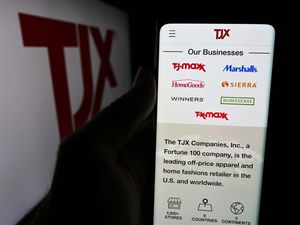New Options-Based Equity Overlay Strategies Expand Fidelity ETF Lineup to 69 Products, Build on Fidelity’s Rapidly Growing Alternative Investments Offering
Fidelity Investments® today announced the launch of three actively managed liquid alternatives (alts) ETFs: Fidelity Dynamic Buffered Equity ETF (FBUF), Fidelity Hedged Equity ETF (FHEQ), and Fidelity Yield Enhanced Equity ETF (FYEE). The options-based ETFs are listed on CBOE and available commission-free for individual investors and financial advisors through Fidelity’s online brokerage platforms today, adding to Fidelity’s $14 billion alts lineup.
“The launch of these ETFs broadens Fidelity’s liquid alts offering at a time when we’re seeing increased client demand for downside protection and enhanced income while invested in equity markets,” said Bill Irving, Head of Fidelity Asset Management Solutions at Fidelity Investments. “The new options-based equity strategies seek to offer risk mitigation, volatility reduction, or yield enhancement in a familiar ETF wrapper, backed by Fidelity’s legacy of active management.”
Underlying each ETF is a common core U.S. equity strategy that seeks to outperform the S&P 500 Index. This strategy leverages a multifactor model to help select companies with desirable fundamental characteristics, including attractive valuations and strong quality metrics. The portfolio construction aims to keep the fund’s risk characteristics similar to those of the benchmark. Each ETF combines this core equity portfolio with a distinct options-based overlay, seeking to add defensiveness or enhance yield.
- FBUF combines call-writing and put-buying overlays to create a dynamic “collar” overlay. The resulting strategy is defensive; it aims to provide good downside protection but may give up some upside participation.
- FHEQ aims to protect against sudden and meaningful market drawdowns, while still participating in sharp market rallies, by buying put options at various expiries and strikes. Because this strategy strictly buys protection, it may lag the market if there is low volatility or the market moves sideways.
- FYEE seeks to deliver an attractive distribution yield by harvesting option premia from dynamic covered call writing. In exchange for the benefit of the higher distribution yield, there is an upside cap on equity portfolio performance if the market rallies above the call option strike price.
The portfolio management team for all three ETFs includes long-tenured co-managers Eric Granat, Anna Lester, George Liu, Mitch Livstone, and Shashi Naik. The products are competitively priced with the estimated net total expense ratio for FBUF and FHEQ being 0.48%, and FYEE being 0.28%.
Fidelity’s Growing ETF Platform
Fidelity’s ETF lineup consists of 69 products, including 25 actively managed equity ETFs, 13 fixed income ETFs, 13 equity factor ETFs, six passive thematic ETFs, 11 passive equity sector ETFs, and Fidelity ONEQ. Fidelity also recently launched Fidelity® Wise Origin® Bitcoin fund (FBTC), one of the industry's first spot bitcoin exchange-traded products (ETPs) that seeks to track the performance of bitcoin. The launch of FBUF, FHEQ, and FYEE builds on the $69.35 billion in assets under management of this total lineup.
As part of Fidelity's commitment to financial education, the company offers a variety of resources to help investors review ETF investing ideas, decide which types of ETFs may fit their investing needs, or browse ETFs with Fidelity’s screeners: fidelity.com/etfs/investing-in-etfs or institutional.fidelity.com/advisors/investment-solutions/performance/fidelity-etfs?tab=overview. As a leading provider of ETFs, Fidelity’s platform offers individual investors and advisors access to more than 2,500 ETFs, with more than $1.2 trillion in ETF client assets as of February 29, 2024.
Alternative Investments at Fidelity
Fidelity, through its asset management divisions, offers a range of alternative investment strategies to investors including private equity, private credit, real assets, liquid alternatives, and digital assets. In 2023, Fidelity launched its first interval fund, Fidelity Multi-Strategy Credit Fund, and its first business development company (BDC). In 2022, Fidelity launched Fidelity Hedged Equity Fund (FEQHX), Fidelity Macro Opportunities Fund (FAQAX) and Fidelity Risk Parity Fund (FAPSX), three liquid alts mutual funds available for individual investors and advisors to purchase commission-free through Fidelity’s online brokerage platforms.
Fidelity, through its Fidelity Institutional Wealth Management Services division, is also a leading provider of custodial services of more than 5,000 alternative products to its institutional, and intermediary clients. With more than $70 billion in alternative investment assets under administration, the firm is well positioned across the industry with investment capabilities including proprietary research on third-party alts strategies and thought leadership.
About Fidelity Investments
Fidelity’s mission is to strengthen the financial well-being of our customers and deliver better outcomes for the clients and businesses we serve. Fidelity’s strength comes from the scale of our diversified, market-leading financial services businesses that serve individuals, families, employers, wealth management firms, and institutions. With assets under administration of $12.6 trillion, including discretionary assets of $4.9 trillion as of December 31, 2023, we focus on meeting the unique needs of a broad and growing customer base. Privately held for 77 years, Fidelity employs more than 74,000 associates across the United States, Ireland, and India. For more information about Fidelity Investments, visit https://www.fidelity.com/about-fidelity/our-company.
###
Free commission offer applies to online purchase of ETFs in a Fidelity retail account. The sale of ETFs is subject to an activity assessment fee (from $0.01 to $0.03 per $1,000 of principal).
Keep in mind that investing involves risk. The value of your investment will fluctuate over time, and you may gain or lose money.
ETFs are subject to market fluctuation and the risks of their underlying investments. ETFs are subject to management fees and other expenses.
Risks for Fidelity Yield Enhanced Equity ETF
Stock markets, especially foreign markets, are volatile and can decline significantly in response to adverse issuer, political, regulatory, market, or economic developments.
Writing call options involves the risk that the fund may be required to sell the underlying security or instrument (or settle in cash an amount of equal value) at a disadvantageous price or below the market price of such underlying security or instrument, at the time the option is exercised. As the writer of a call option, the fund forgoes, during the option’s life, the opportunity to profit from increases in the market value of the underlying security or instrument covering the option above the sum of the premium and the exercise price but retains the risk of loss should the price of the underlying security or instrument decline. Additionally, the fund’s call option writing strategy may not fully protect it against declines in the value of the market.
While the fund will normally pay its income as distributions, the fund’s distributions may exceed the fund’s income and gains for the fund’s taxable year. Distributions in excess of the fund’s current and accumulated earnings and profits will be treated as a return of capital and may have a negative impact on the fund.
The fund’s ability to distribute income to shareholders will depend on the yield available on the common stocks held by the fund and the premiums received by the fund with respect to its written call options. Changes in the dividend policies of companies held by the fund could make it difficult for the fund to provide a predictable level of income. In addition, the premiums received by the fund with respect to its written call options will vary over time and based on market conditions.
Securities selected using quantitative analysis can perform differently from the market as a whole as a result of the factors used in the analysis, the weight placed on each factor, and changes in the factors' historical trends.
High portfolio turnover (more than 100%) may result in increased transaction costs and potentially higher capital gains or losses. The effects of higher than normal portfolio turnover may adversely affect the fund's performance.
An ETF may trade at a premium or discount to its Net Asset Value (NAV).
These alternative investment strategies may not be suitable for all investors and are not intended to be a complete investment program for any investor. There is no assurance that the ETFs will be profitable.
Risks for Fidelity Hedged Equity ETF and Fidelity Dynamic Buffered Equity ETF
Stock markets, especially foreign markets, are volatile and can decline significantly in response to adverse issuer, political, regulatory, market, or economic developments.
The ETF uses investment techniques that are different from the risks ordinarily associated with traditional equity investments and are considered complex trading strategies. The Fund may purchase or write (i. sell) put and call options. The notional downside protection offered by the option may be less or greater than the value of the Fund’s portfolio. Options may involve economic leverage, which could result in greater volatility in price movement. Certain transaction costs associated with purchasing and writing options may impact the Fund’s returns and in highly volatile markets the cost is expected to increase.
Securities selected using quantitative analysis can perform differently from the market as a whole as a result of the factors used in the analysis, the weight placed on each factor, and changes in the factors' historical trends.
High portfolio turnover (more than 100%) may result in increased transaction costs and potentially higher capital gains or losses. The effects of higher than normal portfolio turnover may adversely affect the fund's performance.
An ETF may trade at a premium or discount to its Net Asset Value (NAV).
These alternative investment strategies may not be suitable for all investors and are not intended to be a complete investment program for any investor. There is no assurance that the ETFs will be profitable.
FBTC is for investors with a high risk tolerance. It invests in a single asset, bitcoin, which is highly volatile and can become illiquid at any time. FBTC is not a traditional ETF registered under the Investment Company Act of 1940. To learn more about Fidelity Wise Origin Bitcoin Fund, see the fund’s prospectus.
FBTC is not an investment company registered under the Investment Company Act of 1940 (the "1940 Act") and is not subject to regulation under the Commodity Exchange Act of 1936 (the "CEA"). As a result, shareholders of FBTC do not have the protections associated with ownership of shares in an investment company registered under the 1940 Act or the protections afforded by the CEA.
Digital assets are highly volatile, and their market movements are very difficult to predict. Various market forces may impact their value including, but not limited to, supply and demand, investors' faith and their willingness to purchase it using traditional currencies, investors' expectations with respect to the rate of inflation, interest rates, currency exchange rates, an evolving legislative and regulatory environment in the U.S. and abroad, and other economic trends. Investors also face other risks, including significant and negative price swings, flash crashes, and fraud and cybersecurity risks. Digital assets may also be more susceptible to market manipulation than securities.
The performance of the Fund will not reflect the specific return an investor would realize if the investor actually purchased bitcoin. Investors in the Fund will not have any rights that bitcoin holders have and will not have the right to receive any redemption proceeds in bitcoin.
Stock markets, especially foreign markets, are volatile and can decline significantly in response to adverse issuer, political, regulatory, market, or economic developments. Foreign securities are subject to interest rate, currency exchange rate, economic, and political risks. The value of securities of smaller, less well-known issuers can perform differently from the market as a whole and other types of stocks and can be more volatile than that of larger issuers. Securities selected using quantitative analysis can perform differently from the market as a whole as a result of the factors used in the analysis, the weight placed on each factor, and changes in the factors' historical trends. Securities lending involves the risk that the borrower may fail to return the securities loaned in a timely manner or at all. If the borrower defaults on its obligation to return the securities loaned because of insolvency or other reasons, a fund could experience delays and costs in recovering the securities loaned or in gaining access to the collateral. An ETF may trade at a premium or discount to its Net Asset Value (NAV).
Before investing in any exchange-traded fund, you should consider its investment objectives, risks, charges, and expenses. Contact Fidelity for a prospectus, offering circular or, if available, a summary prospectus containing this information. Read it carefully.
Fidelity, Fidelity Investments and the pyramid logo are registered service marks of FMR LLC. The third-party trademarks appearing herein are the property of their respective owners.
Fidelity Brokerage Services LLC, Member NYSE, SIPC, 900 Salem Street, Smithfield, RI 02917
National Financial Services LLC, Member NYSE, SIPC, 245 Summer Street, Boston, MA 02110
Fidelity Distributors Company LLC, 900 Salem Street, Smithfield, RI 02917
1140776.1.0
1.9912604.100
© 2024 FMR LLC. All rights reserved.
View source version on businesswire.com: https://www.businesswire.com/news/home/20240411838052/en/
Contacts
Contact for Media Only:
Corporate Communications
fidelitymediarelations@fmr.com
Gabbi DiNobile
(617) 392-2696
Gabbi.DiNobile@fmr.com
Caroline St. Angelo
(401) 292-3235
Caroline.St.Angelo@fmr.com
Follow us on Twitter @FidelityNews
Visit About Fidelity and our online newsroom
Subscribe to emailed news from Fidelity






